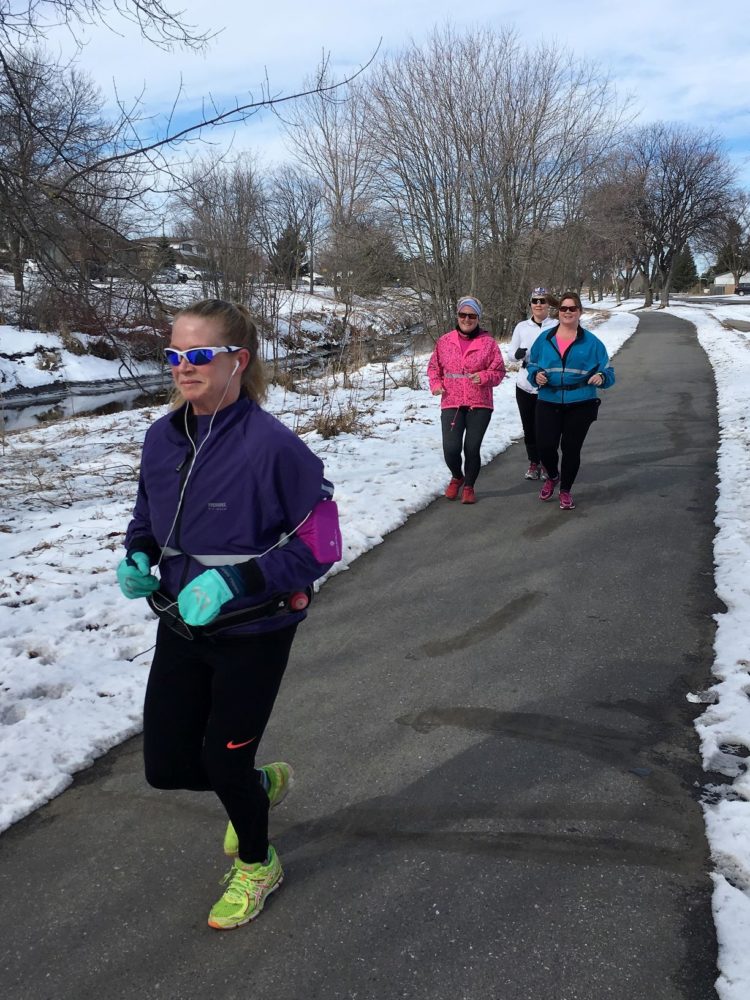Running Helps Cancer Survivors Live Longer
Running can help cancer survivors live longer. Aerobic exercise, like running, can lower our risk of cancer recurrence. It can help survivors live longer and better lives. Don’t believe it? Let’s look at some of the evidence.
Runners Live 3 years Longer than Non-Runners
A review published in Progress in Cardiovascular Disease found that the risk for pre-mature death was reduced by as much as 40% with running. The researchers further estimated that runners live, on average, 3 years longer than non-runners.
The researchers also looked at the other forms of physical activity. Other forms of exercise did not have the same dramatic effect on life expectancy. Activities such as cycling and walking lowered the risk of premature death to only 12%. While these activities do add years to our lives, the benefit is not as great as with running.
The authors also examined the difference between slow runners vs fast runners. They found that speed of running didn’t matter, the results were the same. Also, overweight people and those who smoke and drank still had higher life expectancies if they ran regularly.
The conclusion was that just 1 hour of running lengthens life expectancy by 7 hours. Those are great odds. The authors capped the benefit at a 3 year difference in this study.
In another study published in the Journal of the American College of Cardiology, researchers looked at causes of death over a 15 year span and compared runners with non-runners. The conclusion was that running for 5 to 10 minutes per day reduces the risk of death by 30 – 40%. This was true even when runners ran at slow speeds.
So, it doesn’t matter how fast or slow you go, as long as you just run.
Running is Better than Walking for Cancer Survivors
Let’s look at one study that demonstrated running was better than walking in lowering mortality in breast cancer survivors, specifically.
A National Runners’ and Walkers’ Health Study by Berkeley Labs followed 986 breast cancer survivors for 9 years. They evaluated runners and walkers combined and runners to walkers separately. They found a lower risk of dying if people followed an exercise schedule of at least 2.5 hours per week. This was true for both runners and walkers.
When they compared runners to walkers, there were significantly less moralities among runners. When they looked at runners who exceeded the national recommendations, they found an even greater reduction in mortality risk.
The conclusion was that exercise decreased mortality, but running was better than walking. More than 2.5 hours per week was better than just meeting the weekly guideline.
“Previous studies have shown that breast cancer survivors who meet the current exercise recommendations (2.5 hours of moderate intensity physical activity per week) are at 25% lower risk for dying from breast cancer. New research from the U.S. Department of Energy’s Lawrence Berkeley National Laboratory (Berkeley Lab) and reported in the International Journal of Cancer suggests that exceeding the recommendations may provide greater protection, and that running may be better than walking. “
Berkeley Lab News Center, January 28, 2014

Slow Running is Better than Faster Running
The good news for all of us is that you don’t have to be a fast runner to benefit. Another study published in the Journal of the American College of Cardiology, looked at long-term mortality and pace. They found that slow and moderate runners lived longer than sedentary non-runners.
Other studies have also explored this and found similar results. If you can’t run for 150 minutes per week, there are still significant effects on your health if you do some running. And if you cannot sustain a faster pace, your life expectancy is still improved. Some running is better than no running.
And walking is better than no exercise at all.
Running Lessens Body Inflammation so We Live longer
Studies are now underway to examine the reasons behind why running helps us live longer.
One study, published in January 2019, shows that running decreases inflammation in the body that leads to many diseases, including cancer. Mice that ran on wheels had less biological aging than sedentary mice. This included lower levels of molecules that are known to be involved in cancer progression. Malignant tumors were completely absent in the aged mice that ran. Tumors were found in the brain, liver, spleen and intestine of the sedentary mice.
The researchers concluded that lifelong running reduces inflammation, protects against multiple types of cancer and increases the health and lifespan of mice.
It is Never Too Late to Start Running
So, you may be thinking that you are too old to start running now. Not true. Science also tells us that you are never too old to start exercising.
Researchers published an article in the British Journal of Sports Medicine that suggests health can improve even if you start exercising as an older adult. They followed just over 3400 healthy older participants over an 8 year period. At the end of the 8 years, the active participants were 3 to 4 times more likely to maintain their health compared to the inactive participants. Participants that sustained activity for more than 4 years were 7 times more likely to be healthy compared to inactive participants.
“Significant health benefits were even seen among participants who became physically active relatively late in life. “
— British Journal of Sports Medicine, Volume 48, Issue 3 —
Science has shown us that running can add years to our lives. Running can help reduce cancer recurrence rates and help survivors lead better quality lives. You are not too old to start and even slow running helps.
So, let’s start running!









